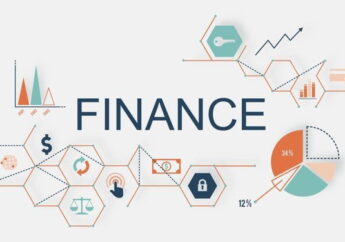Learning About Order Types In The FX Market
by Abdul Aziz Mondal Finance Published on: 23 March 2022 Last Updated on: 18 October 2024

The International FX market operates on a 24/7 basis. This means that the value of holdings can fluctuate depending on the market scenario at that time. If an open trading position with a forex broker is not managed for a few days, its value can drastically change. Additionally, it is not possible for traders to always actively manage their positions manually.
This is where market orders come into play. These are special trading tools offered by some of the best forex brokers, which allow traders to passively manage their trading positions. As a result, traders can ensure the value of trading which remains within certain boundaries.
6 Different Types Of Order In FX Market
Even though the market remains in the operational state, there are several order types in the forex market, with some of the most important ones mentioned below.
1. Market Order
Market orders can be referred to as an order to buy a certain currency with the present market price. It is placed when the trader uses the “buy now” button when using a broker. When placed, it is executed on a real-time basis. It automatically searches for the best possible price available in the market and books the trader’s order at that price.
The market order may be executed at a slightly different price than what the trader intended, as prices in the Forex market change so rapidly. This is known as slippage, which may work for or against a trader. When an FX market order is placed, it becomes an open position. Thus, any profits or losses from the order have to be realized when the order is closed.
Market orders are primarily used for large wholesale transactions. Customers give a bank an order to execute a significant amount in the best way the market maker sees fit.
This provides the market with the maker the ability to judge liquidity and complete the order over time to minimize the market impact as much as possible and achieve the best possible fill for the client. Market orders are an efficient way to deal when you trust the counterparty you are trading with.
2. Limit Order
A limit order establishes an investment limit line. Here, the buy or sell is executed only when the value of the trading pairs has reached a price equal to or better than the predetermined one. Limit orders are best when traders aren’t in a hurry, and they don’t think the FX market is going to move much, or if they have a specific entry point in mind.
To sum it up, a limit order direct to the nonmarketable instruction which is received by a broker. A limit order contains multiple variable limit order placements, limit order cancellations, and limit order replacements.
3. Dependent Orders
The FX market allows every investor to create conditional orders items. That means the traders can place two or more orders simultaneously. Established on the conditions in the market, only one of them will be executed.
4. Dark Pools
Dark pools are another type of order available only in the wholesale market. Traders show an interest in buying or selling an amount of currency but do not assign a price to the order. The FX market order goes into the dark pool and waits for someone to match in the opposite direction.
5. Stop Order
With a stop order, a trader has the option to pre-program a price as a parameter. When the parameter is exceeded, an order is triggered. In the case of a sell, the FX market order is executed below the established value and vice versa in the case of a buy.
6. Stop-Loss Order
Stop-loss and FX market orders are position closing orders which are triggered automatically when the value of the trading pair reaches the loss percentage determined by the trader. With this order type, traders can control losses and end the trade before it’s too late.
Wrapping Up:
The FX market is unpredictable, no matter how elaborately great a trading plan and strategy is. Here, selecting the right broker is also important as not all brokers offer the order types mentioned above. However, It is also important for traders to be aware of the nuances associated with each order type. It is always advised to have a solid grasp of the implications of different order types before using them on your own account.
Read Also:






































































































